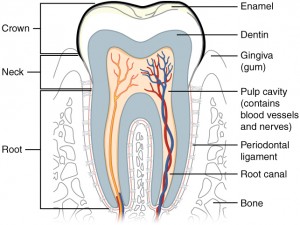Going to the dentist can be an anxiety filled rollercoaster for certain individuals. The sounds of drills, the feeling of dental instruments scraping away at your teeth, and constantly having your dentist asking you to “open wider” makes some people think twice before booking their appointment. Cavities, medically known as Caries, are the most common chronic disease in children and arguably one of the strongest reasons why people book appointments to see their dentist in the first place. Cavities are caused by the food remnants left behind after a meal that are combined with acid made by the bacteria in our mouth. This mixture combined with your saliva forms plaque, which will eat away at the enamel of your teeth, causing cavities. Currently, the only solution is to go to the dentist and get the cavity filled. Recently, a study conducted by researchers from the University of Sydney provides a new cavity prevention system that contrasts current dental practices. Caries Management System (CMS) can stop, prevent, and reverse cavities so you won’t need to always get “drilled and filled” every time the dentist sees minor tooth decay.
Before getting into the CMS lets take a look at the current “drill and fill” method used in dental practices so a comparison can be made with CMS. Traditionally, the dentist would start by administering an anesthetic to numb the area around the damaged tooth. Next the dentist would proceed to clean the bacteria filled area via drill, etch the hole, patch it with a dental filling, then remove any excess substance used. The video below by DentalEdu provides an in-depth visual representation of the current process.

Credit: DentalEdu
Contrasting the current “drill and fill” method of handling cavities, researchers at the University of Sydney found a preventative procedure that found to decrease the need of fillings by 30%-50%. The researchers conducted their study over seven years at 22 different clinics, with 12 of those using the CMS procedure. The patient-specific procedure consists broadly of:
1. Application of high concentration fluoride varnish by dentists to the sites of early decay
2. Attention to home tooth brushing skills
3. Restriction of between-meal snacks and beverages containing added sugar
4. Risk-specific monitoring. (higher risk patients will have more tailored program to fit their needs)
By using CMS, dental practitioners could change their outlook on how tooth decay is viewed, and patients could have a different perspective on the fearful stigma of going to the dentist. Rather than simply drilling the tooth immediately to rid of tooth decay, as well as taking away the tooth itself, this patient-tailored program focuses more on pre-cavity prevention solutions rather than post-cavity drilling. CMS could change how an average person would view going to the dentist, by knowing that they are going to get personalized prevention treatment rather than a drill at the earliest sign of tooth decay would help people improve their oral health as well as become more educated about it.
Harsh Bhatt

